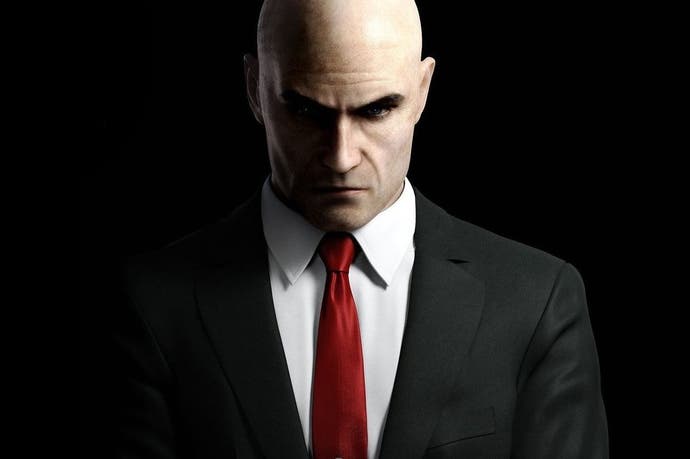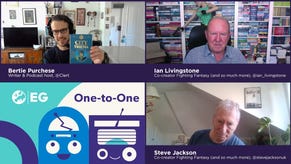Face-Off: Hitman
Full three-way comparison of IO Interactive's reboot - plus DirectX 12 tests on PC.
Nearly four years have passed since the release of Hitman: Absolution, but if you ask enthusiasts of the series, a full ten have lapsed since the last traditional Hitman experience: 2006's Blood Money. This year's reboot is a something of return to that style - a more level-headed assassination simulator that puts a focus on navigating bustling, open-ended areas, where spectacle is mainly found in its supreme AI count. It's IO Interactive's first PlayStation 4 and Xbox One title too, while PC release takes precedent for its early support for DirectX 12. But how do they each stack up
While the gameplay may be classic Hitman, the packaging of the game is anything but standard. This latest series instalment is divided into bite-sized chunks to be doled out over the course of a year. As such, the current state of the game we're examining here includes one main area - a Parisian palace - but this alone offers a plethora of gameplay options to explore, and visuals to admire.
Hitman may share little with the design of the previous game, but it does build on the same technical foundation. Both titles were created using IO's in-house Glacier 2 engine, a custom built deferred renderer designed to accommodate scenes with complex lighting and large crowds. Compared to Absolution, environments and the size of the crowd are expanded greatly while modern techniques, such as the use of a physically-based materials system, help the game match our expectations of current-gen consoles. However, despite the increase in fidelity, Hitman is more visually subdued than its predecessor. The exaggerated colour of Absolution gives way to a more realistic palette overall - though it's an aesthetic that thrives on a fine attention to detail across each stage.
So how do the console versions stack up? Traditionally, IO Interactive has fared well in delivering virtually the same experience across multiple platforms. In that sense, Hitman is no exception. The PlayStation 4 and Xbox One versions of the game both operate at a full 1920x1080 with post-process anti-aliasing and adequate texture filtering. The only noticeable difference we detected is a touch of additional texture blur on Xbox One versus PS4 - perhaps a sign of Sony's machine using SMAA while Xbox One takes the FXAA path - as both are available in the PC version. Regardless, the visual design of the game enables a very clean presentation on both platforms with sharp highlights and minimal shimmering.
Once we actually place the two console versions side by side, it quickly becomes evident that everything else is a match between the two. Whether we're talking about shadow quality, texture quality, or level of detail, the same setting levels are hit on each. Even the extremely lengthy loading times, often counting in at above 90 seconds, are unfortunately shared between the two. Were it not for one single setting available in the menu, it would be difficult to detect any difference at all - this being the ability to remove Hitman's frame-rate cap.
Indeed, IO offers users a choice; play with an unlocked frame-rate, or cap it at 30fps. It's an uncommon feature in most modern console titles (Rocket League being one of few recent examples), and curiously it's permitted here. When the cap is engaged, both versions deliver a predominately locked 30fps experience, and only the training stage exhibits drops below this on Xbox One. For the rest, Hitman runs very smoothly on both machines with this enabled, making PS4 and Xbox One indistinguishable in play.
When unlocked, however, we start to see a tangible difference. The early training missions, for instance, operate with a significant performance advantage on PS4, whereas Xbox One lags behind by around 10fps throughout the first cruise ship mission. Equally, where Sony's machine almost hits a full 60fps in the second training exercise, Xbox One falls notably short of that number. Once we reach the Paris stage though, filled to a greater degree with AI characters than any other level, Xbox One actually manages to turn the tables.
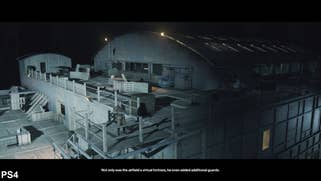

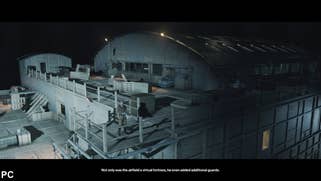




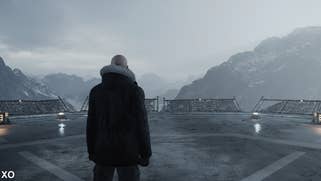
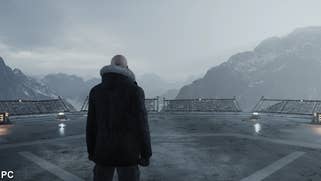


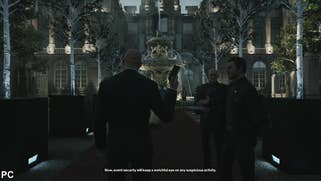
Surprisingly, wading through crowds gives Microsoft's machine a consistent lead of 2-3fps - suggesting its higher CPU clocks are taking to the task of simulating hundreds of AI characters with a little more ease. It's an unusual turnaround given the PS4's favour in the other stages, but also on that holds up to repeat tests. It's a curious turnout, and had both versions shipped locked at 30fps, we might express concerns with a case of forced parity - removing the cap enables us to better understand the ups and downs of each version.
Shifting over to the PC version, the main focus is the benefits of its brand new DirectX 12 mode. Alongside Gears of War Ultimate Edition and the recently patched Rise of the Tomb Raider, Hitman is one of the first big PC games to gain support. In this case, it's designed to enhance performance rather than boost visual quality. As such, the game looks identical in both modes, though we were intrigued to see if frame-rates took any step forward on the newer API.
To test the benefits on GPUs, we took our i7-6700k PC clocked to 4GHz, and put Nvidia's GTX 970 and AMD'sR9 390 through their paces (running at 1440p and maxed settings). Starting with Nvidia's flagship card, there's the good news and the bad news. On the positive slant our latest tests show both Direct X 11 and 12 frame-rates are greatly improved on its latest PC patch. This means results mostly stick to the 50-60fps region in the benchmark - a big leap over the 30-40fps we saw a few days ago (where DirectX 12 actually showed a lead at points). However, regardless of which API you use now, with this latest patch installed, both modes turn in practically like-for-like performance.
There's also a downside to our DirectX12 experience on this GTX 970. On its latest driver 364.51, Hitman crashes on our rig with this API enabled, outright freezing the benchmark halfway through. This isn't something we've encountered on AMD cards so far, and persists after giving our test rig a full Windows 10 reinstall. Even rolling Nvidia's divers back to version 362.00, Hitman has apparent stability issues on the GTX 970 from our testing, and disappointingly the results we do get show no real gain in performance.

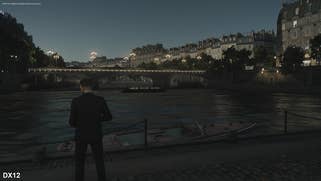



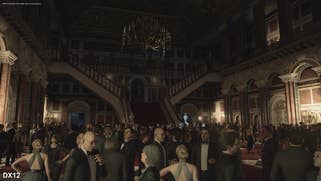
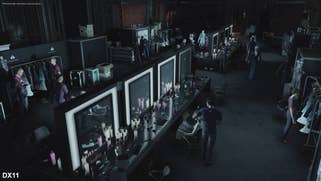
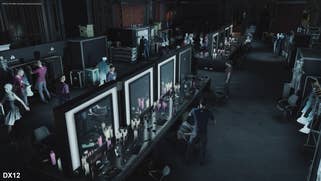
But what of AMD's leading card? Again comparing DirectX 11 with 12 on the R9 390 at 1440p, and we're surprised to find no major advantage once again. On average across the entire test, AMD's card only sees only a gain of 1.5fps with DX12 enabled. This is with the latest Crimson hotfix driver 16.3 too - essential for playing Hitman without crashes. The differences we see fall within the margin of error, and overall, whether you back AMD or Nvidia, the move to DX12 in Hitman doesn't pay off in this case.
The final question then: exactly how do these cards stack up to one another? Opting for DirectX 11 in this case to ensure stability, it's interesting to see AMD's card pulling ahead consistently across the range of each 1440p test. Whether it's panning shots across the Parisian Palace, or deep in the bustle of the crowds, on average the R9 390 gets us to 57fps across this bench. Meanwhile, the GTX 970 turns in 53fps, showing a pretty substantial advantage on AMD's side. We'd love to see how the newer API improves Hitman on PC once the kinks are ironed out though - and possibly its impact on lower-clocked i3 configurations too.
Beyond the inclusion of DX12, the PC version offers a plethora of features that we would expect from any PC release. Support for arbitrary resolutions is in, as is the ability to run in exclusive full-screen, borderless window, and full window mode. Loading times are also significantly quicker than the console editions, even on a mechanical hard drive. The game also scales nicely with the lowest settings still managing to produce an attractive image. We've opted to break out each setting below in order to better show the impact they have on image quality and how the console versions compare.

Level of Detail: In Hitman, the level of detail setting controls the distance in which real-time lights and higher detail geometry become visible. This is most evident while exploring the exterior of the Parisian map where point lights are liberally placed - as you explore the grounds you will notice these lights drawing in. It's not overly distracting at lower levels but the highest setting has a definite impact on world consistency with a moderate performance cost. For comparison, both consoles utilise the medium setting.
Anti-Aliasing: The PC version of Hitman includes three methods of eliminating aliasing; FXAA, SMAA, and SSAA (via a super-sampling slider). In terms of quality, the inclusion of SSAA is certainly beneficial though it comes with the expected performance penalty. On our Hitman test rig with a GTX970, we were able to enjoy the game with a moderate level of SSAA at higher details, provided we capped the frame-rate at 30fps. When aiming for 60fps, however, we had better luck with SMAA which produces an adequately sharp image without the texture blurring issues of FXAA.
Texture Quality: Hitman includes three selectable texture options: low, medium, and high. Cards with just 2GB of VRAM will be limited to the lowest setting but, in this case, the option doesn't function quite as you might expect. We discover that, with certain textures, the low setting dynamically adjusts texture resolution during gameplay likely based on the current VRAM requirements. When looking around the environment we can clearly see textures swapping between lower and higher quality assets in real-time. The consoles use the medium setting in this case, while high brings an extra level of definition to surface textures that is better appreciated at higher resolutions.
Texture Filtering: The expected texture filtering option enables PC users to utilise upwards of 16x anisotropic filtering. There's nothing special about this particular option, but it's nice to note that it functions without issue. The console versions are limited to just 4x anisotropic filtering, which still manages to look reasonable within the confines of this game.
SSAO: Hitman keeps things simple here. You have the option to enable or disable ambient occlusion -and that's it. We're slightly disappointed by the lack of more advanced options here but, thankfully, the implementation still does a reasonable job. That said, contact shadows around characters at time appear overly dark while others can exhibit a visible gap between the shadow and the model itself. Of course, this feature is enabled on consoles.
Shadow Maps: An interesting setting that has a dramatic impact on performance. Rather than simply controlling the resolution of shadow maps, this setting instead influences when they are drawn in certain circumstances. While exploring indoor locations, for instance, this setting controls the proximity in which shadow maps become visible. As the setting is lowered, performance is boosted notably on our PC test rig, to a greater extent than most other settings mentioned here.
Shadow Resolution: As you might expect, this setting controls the resolution of real-time shadows. Due to the way in which shadows are filtered, the lower settings actually manage to look very reasonable here. Consoles use the medium setting here, which provides a natural balance.
Beyond the visuals, there is another issue to discuss that impacts all three versions of the game - the online functionality. Hitman is split between offline and online modes, where an online state enables extras such as Live Challenges and the Contracts mode. Save games cannot be shared between the two modes, and so you must commit to one or the other while making progress through the game. The issue here is that, during its first few days on the market, the online mode has proven unreliable. When you lose connection to the server, for any reason, the game boots you back to the main menu. You lose progress and, consequently, must deal with lengthy load times. It's not an optimal situation.
Hitman: the Digital Foundry verdict
Overall, Hitman is a technically accomplished if understated experience . The Glacier 2 engine delivers attractive visuals that perfectly suit the game, and it's apparent IO Interactive has taken a console-first approach to building its levels - with PC receiving a few neat visual extras at its maximum preset. As a Hitman game, all of the key elements are in place. The technology only propels the scale of each level, with some impressive flourishes of world detail backed by a staggering volume of AI bystanders. The loading times are a bugbear on PS4 and Xbox One, but it's clear this is by necessity, and that the game takes a GTA5-style approach in bulk-loading its assets ahead of time.
Unfortunately, the stability issues on PC and reliance on a network connection throw a wrench in the works. Progress and time can be quickly snatched away from the player as a result of these problems and should be kept in mind when considering the game. It positions Hitman as more of a service than a product. Patches and game updates will develop the level selection, of course, but along the way we hope its more glaring problems are also given attention.
When it comes to which version to select, all three releases are very comparable. PS4 offers a very slight image quality and performance advantage in most scenarios, but the difference is purely academic once its frame-rate cap is engaged (which comes highly recommended). Both consoles offer a great Hitman experience otherwise, and Xbox One very much holds its own here. As for PC, if you have the hardware it's possible to eliminate its long loading times and reach frame-rates of 60fps and higher with relative ease. There's a suite of visual upgrades too, though the lack of a tangible improvement on DirectX 12 is surprising - and we hope to see it put to better use in future tests.
